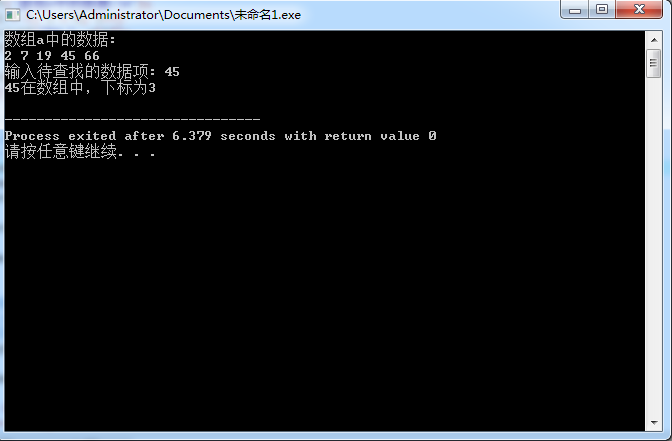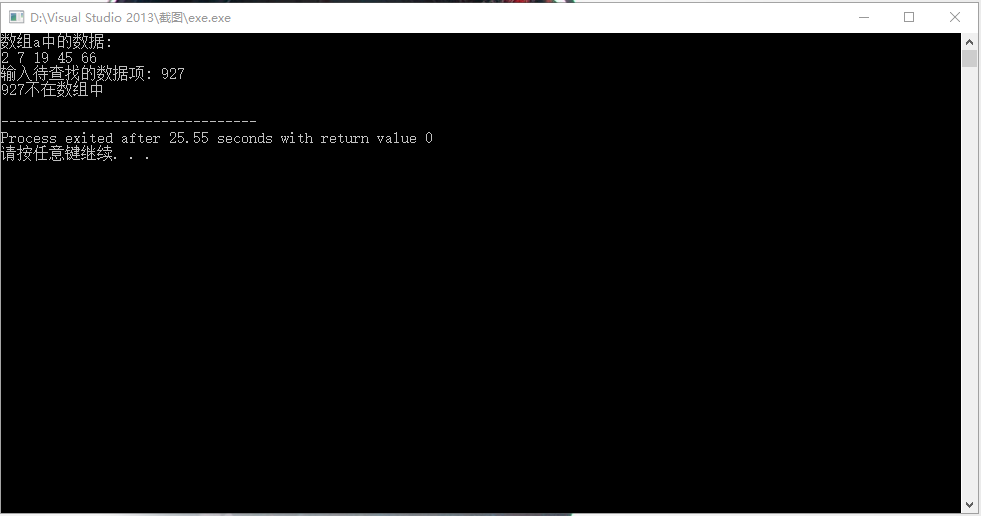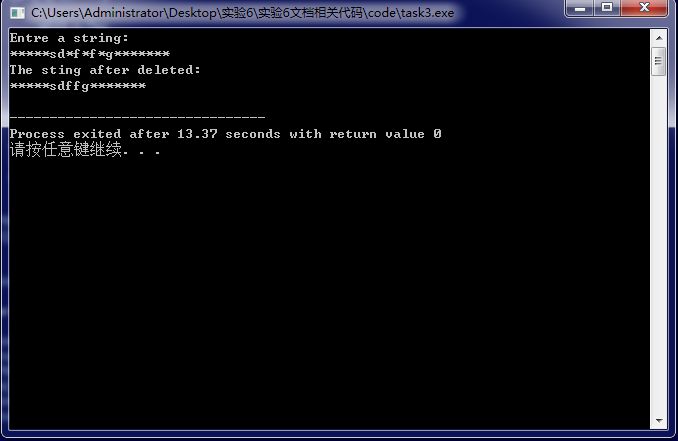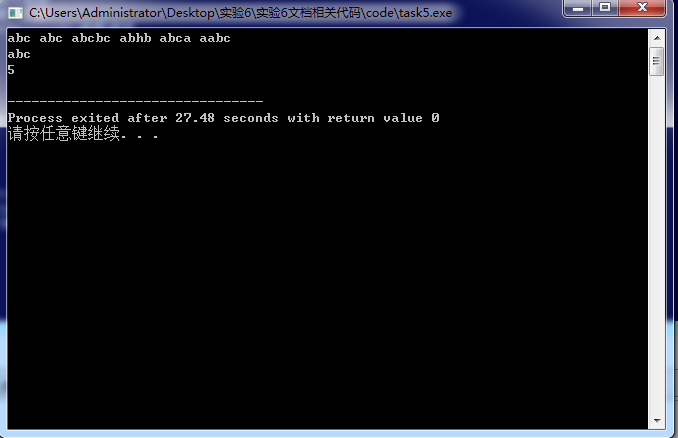第六次实验
实验1
#include <stdio.h> #define N 5 int binarySearch(int *x, int n, int item); // 函数声明 int main() { int a[N] = {2, 7, 19, 45, 66}; int i, index, key; printf("数组a中的数据:\n"); for (i = 0; i < N; i++) printf("%d ", a[i]); printf("\n"); printf("输入待查找的数据项: "); scanf("%d", &key); // 调用函数binarySearch()在数组a中查找指定数据项key,并返回查找结果给index // 补足代码① // ××× index=binarySearch(a,N,key); if (index >= 0) printf("%d在数组中,下标为%d\n", key, index); else printf("%d不在数组中\n", key); return 0; } // 函数功能描述: // 使用二分查找算法在从地址x开始的连续n个数据项中,查找特定数据项item // 如果找到,返回其下标; 如果没找到,返回-1 int binarySearch(int *x, int n, int item) { int low, high, mid; low = 0; high = n - 1; while (low <= high) { mid = (low + high) / 2; if (item == *(x + mid)) /*补足代码②*/ return mid; else if (item < *(x + mid)) /*补足代码③*/ high=mid-1; else /*补足代码④*/ low=mid+1; } return -1; }



实验2
#include <string.h> #include <stdio.h> #include <stdlib.h> void fun(char *a) { /*****ERROR********/ int i=0; char *p = a; /****ERROR***/ while (*p && *p == '*') { a[i] = *p; i++; p++; } while (*p) { /******ERROR*******/ if (*p != '*') { a[i] = *p; i++; } p++; } /******ERROR*******/ a[i] = '\0'; } int main() { char s[81]; printf("Enter a string :\n"); gets(s); /***ERROR******/ fun(s); printf("The string after deleted:\n"); puts(s); return 0; }

实验3
#include <stdio.h> #include <stdlib.h> #include <string.h> void fun(char *a) { /**ERROR******/ int i=0; char *t = a, *f = a; char *q = a; while (*t) t++; t--; while (*t == '*') t--; while (*f == '*') f++; /***ERROR***/ while (q <= f) { a[i] = *q; q++; i++; } while (q < t) { /***ERROR**/ if (*q != '*') { a[i] = *q; i++; } q++; } while (*q) { a[i] = *q; i++; q++; } /**ERROR**/ a[i] = '\0'; } int main() { char s[81]; printf("Entre a string:\n"); gets(s); /**ERROR**/ fun( s); printf("The sting after deleted:\n"); puts(s); return 0; }

实验4
#include <stdio.h> #include <string.h> #define N 80 int isPalindrome(char *s); // 函数声明 int main() { char str[N]; int flag; printf("Enter a string:\n"); gets(str); flag = isPalindrome(str); // 函数调用 if (flag) printf("YES\n"); else printf("No\n"); return 0; } // 函数定义 // 功能:判断指针s指向的字符串是否是回文串,如果是,返回1;否则,返回0。 int isPalindrome(char *s) { // 补足函数实现 // ××× int lo=0,la=strlen(s)-1,mid; mid=(lo+la)/2; while(lo<la) { if(*(s+lo)!=*(s+la)) return 0; else lo++;la--; } return 1; }

实验5
#include <stdio.h> #define N 80 int count(char *str, char *substr); // 函数声明 int main() { char str[N], substr[N]; int n; gets(str); // 输入母串 gets(substr); // 输入子串 n = count(str, substr); // 函数调用 printf("%d\n", n); return 0; } int count(char *str, char *substr) { int i, j, k; int num = 0; for(i=0; /*待补足①*/i<N; ++i) for(/*待补足②*/j=i, k=0; substr[k] == str[j]; k++, j++) if(substr[/*待补足③*/k+1] == '\0') { num++; break; } return(num); }




 浙公网安备 33010602011771号
浙公网安备 33010602011771号